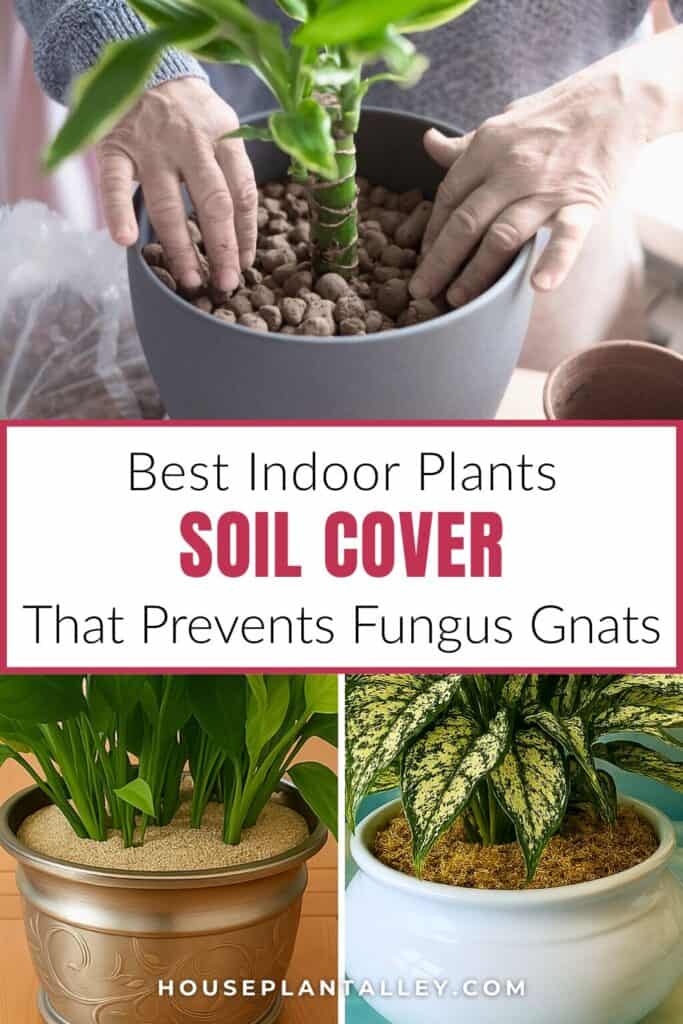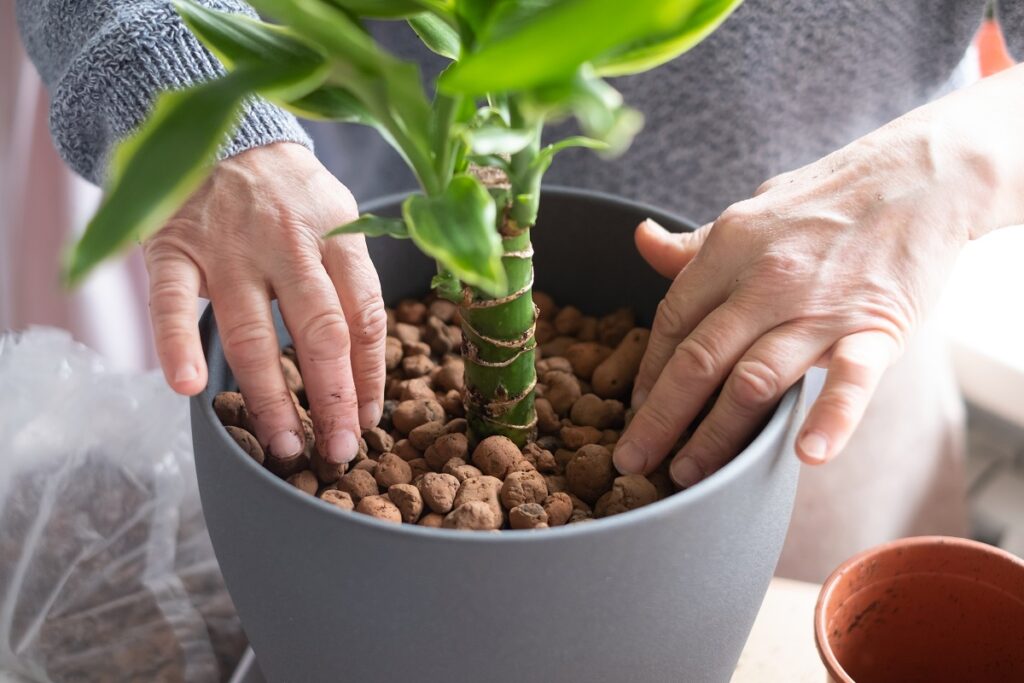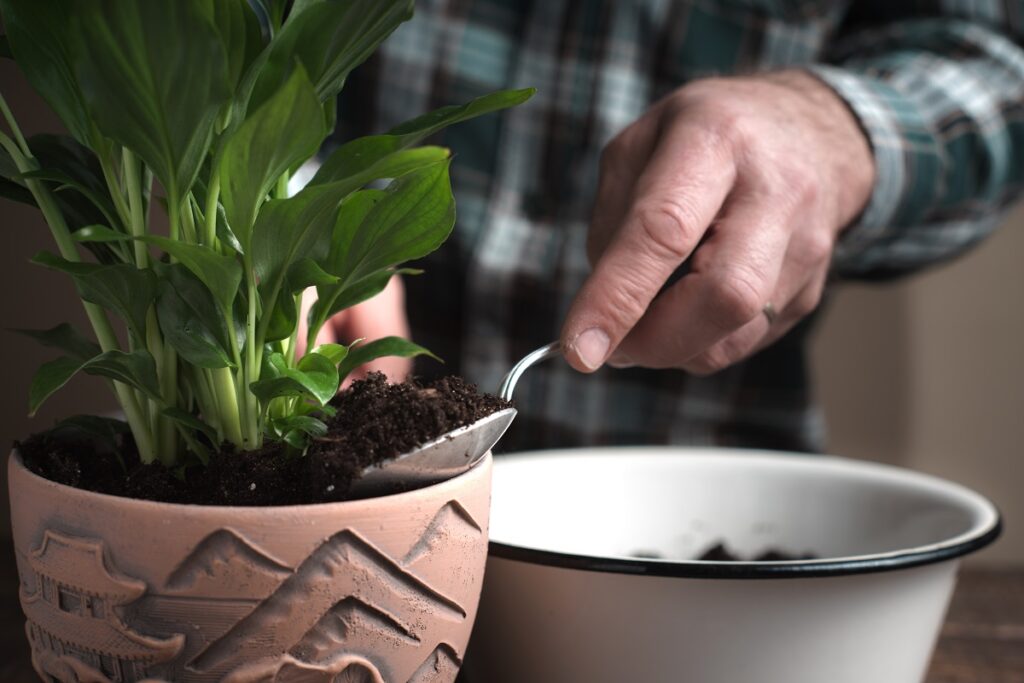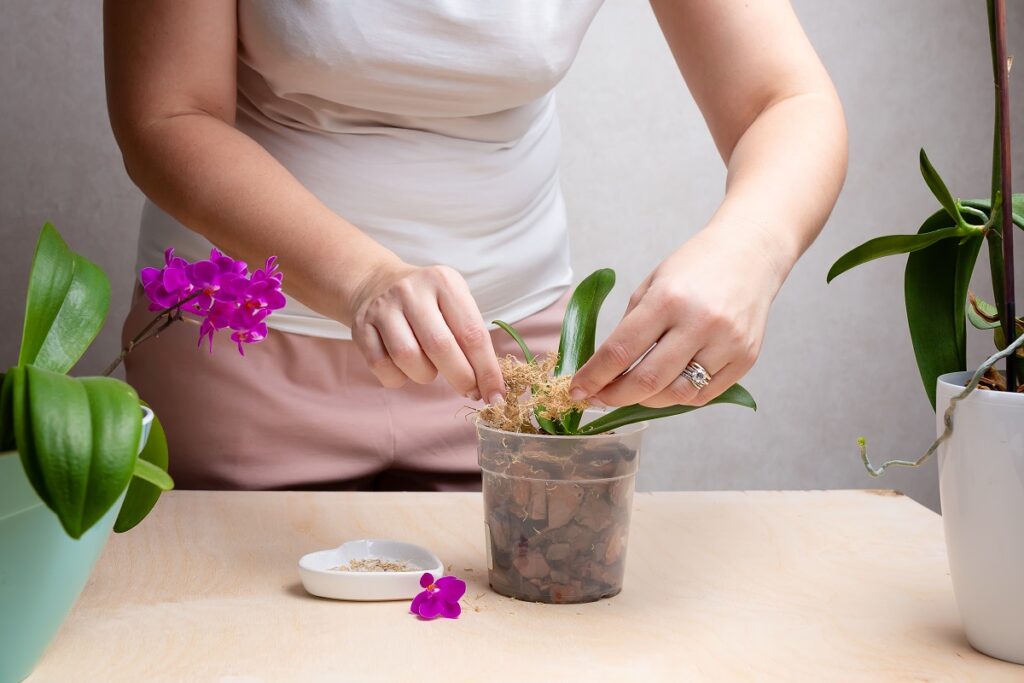Keeping your houseplants healthy and thriving can take a bit of work, but it’s well worth the effort! One way to help them stay in top condition is by using soil cover. Soil cover helps protect your indoor plants from pests, retains moisture, and improves drainage. It also keeps dirt from splashing up onto leaves and stems during watering. In this article, we’ll discuss why soil cover for indoor plants is so important – as well as what types are best to use. You’ll be giving your houseplants the best care possible in no time!

Contents
Benefits Of Soil Cover For Indoor Plants
Soil cover helps indoor plants thrive, so it’s definitely worth considering if you want your greenery to look its best! Organic mulches provide a range of benefits, from temperature control to light exposure. When used correctly, they can help increase water retention and improve the quality of the soil. This can be especially beneficial for those who are growing their plants indoors. Not only do organic mulches keep the temperature consistent, but they also protect against fluctuating weather conditions and extreme temperatures.
Organic mulches also help regulate moisture levels in the soil. This is important for indoor plants since they don’t get as much natural rainfall as outdoor plants do. The mulch acts as a barrier between the soil and air, preventing evaporation and keeping the soil moist longer. Plus, organic mulches act like a blanket around your indoor plants, giving them an extra layer of protection from harsh winds and cold temperatures.
Organic mulches also add nutrients to the soil which promote healthy root growth and better absorption of water and nutrients by your vegetation. As an added bonus, these materials are biodegradable so there’s no need to worry about disposing of them when it comes time to change out your potting mix or repotting your plant! Overall, soil cover has many advantages for helping keep your indoor plants healthy and happy – it’s worth taking some time to research what type would work best for yours!

Best Soil Cover For Indoor Plants
When it comes to indoor plants, you often need the right soil cover to keep them healthy and beautiful. Pebbles, river sand, moss, crushed seashells, and mulch are some of the best soil covers to choose from. Each material has its own unique benefits and can be used in different ways to create a stunning aesthetic for your plants.

Pebbles
Pebbles can provide a great way to decorate your indoor plants while also providing an effective soil cover. Not only do they add a touch of beauty, but when used correctly, pebbles can help the health of your plants as well.
Did you know that pebbles can also help to regulate soil moisture by preventing excess evaporation and allowing for better drainage? This is particularly helpful for plants that are sensitive to overwatering or those that require a drier soil environment. Additionally, pebbles can help to reduce the growth of weeds and the spread of disease by acting as a natural barrier.
When selecting pebbles for your indoor plants, choose ones that are smooth and do not contain any sharp edges or rough surfaces that could damage delicate roots. You can find a variety of pebbles in different colors and sizes at your local garden center or online.
River Sand
As an alternative to pebbles, river sand can provide a sophisticated and effective soil cover for your houseplants. River sand is composed of minerals like quartz, feldspar, and mica that can help maintain moisture levels in the soil while providing good drainage for your plants. Here are four key points to consider when using river sand as a soil cover:
- The size of the container you choose should be proportional to the amount of river sand needed;
- Choose plants that will thrive in sandy soils;
- It helps aerate the roots for improved plant growth.
Using river sand as a soil cover is an excellent choice for indoor plants because it provides superior drainage while retaining important minerals and nutrients from the soil. Additionally, its attractive look adds aesthetic value to your home decor without compromising the safety or function of your houseplants.
Moss
Moss is an attractive and sophisticated soil cover for indoor plants, providing both a decorative touch and essential moisture retention. Its biodegradable nature makes it an excellent choice for those looking to maintain the pH balance of their soil while also providing nutrient-rich benefits to the plants.
Moss can help retain moisture in the soil, which helps protect root systems from drying out or becoming too wet due to over-watering. This leads to healthier plants that will thrive indoors with little additional effort. In addition, moss adds texture and visual appeal to any plant arrangement, making it a great choice for any home gardener or interior designer looking for a unique touch.

Crushed Seashells
Crushed seashells create a stunning and unique soil cover for your indoor garden, providing a visually pleasing contrast to lush greenery while also helping to retain moisture in the soil. Using crushed seashells as a soil cover is an especially great choice for indoor plants since it creates an ideal balance of water retention and nutrient absorption.
Moreover, the broken pieces of shells help promote healthy aeration in the soil that allows air to circulate freely around plant roots. This helps optimize their growth potential by allowing them access to essential nutrients, vitamins, and minerals from the soil. Crushed seashells are also aesthetically pleasing with their bright white color adding visual interest to any garden or home decor.
Mulch
Adding a layer of mulch to your outdoor garden can help give it an instant boost of color and texture, making it even more inviting for you to enjoy. The same is true for indoor plants, as mulch can provide the necessary insulation to keep moisture in and weeds out. Organic mulches like bark and wood chips are great options; they also decay over time, adding nutrients to your soil.
Vermiculite and perlite mulches are also good choices for indoor plants; they retain water without attracting pests or fungi while providing aeration. Not only that, but these types of mulches won’t break down over time so you won’t need to worry about continually replacing them.
Crushed Glass
Sparkling and sophisticated, crushed glass is an eye-catching way to add a unique touch to your indoor garden. It can also be used as a soil cover in indoor potted plants for aesthetic purposes. Unlike traditional mulch, the non-organic material does not break down over time; instead, it helps retain moisture and improve the drainage of potting mix. Additionally, it can help increase air circulation around roots while preventing evaporation from the soil surface.
Crushed glass is effective in regulating indoor humidity when placed on top of potting mix. The reflective quality of glass allows for maximum utilization of light which is beneficial for plant nutrition as well. As an added bonus, this type of soil cover helps reduce weed growth due to its non-porous texture. Furthermore, its lightweight structure makes it easier to control how much or little cover you use compared with heavier materials like stone or gravel.
Bark Chips
Bark chips are a great way to add texture and color to your outdoor space, making it look more inviting and vibrant! Whether you’re looking for an organic alternative to chemical fertilizers or just want a unique potting medium, bark chips should be your go-to choice. Not only do they provide essential nutrients to the soil, but they also come in a variety of sizes that make them perfect for any plant container or pot.
Bark chips provide excellent drainage and aeration which encourages root growth, allowing the plants to absorb the necessary nutrients while keeping moisture levels at optimum levels. In addition, bark chips can help eliminate weeds due to their dense structure which restricts light from reaching weed seeds. All in all, bark chips offer many advantages for indoor plants and are a great option when it comes to soil coverage.
Disc Soil Covers
Moving on from bark chips, disc soil covers are also an option for indoor plant soil cover. Disc soil covers can give your plants a clean look and help retain moisture in the potting mix. They’re easy to use: all you need to do is place them at the top of your potted plants. Here are some benefits of using disc soil covers:
- They protect the potting mix from drying out too quickly, helping you save time and energy when watering.
- Their porous texture allows air and water to pass through, allowing necessary nutrients to get into the root system for healthy growth.
- They act as a barrier, preventing pesky weeds from entering the potting mix or taking root in your garden.
- Made of natural coconut fiber
- Very thick, evenly distributed, and durable
- Maintains the moisture of soil in the plant pots
- Prevents weeds from growing arbitrarily
- 100% natural and sustainable
Coconut Fiber
Coconut fiber is an excellent soil amendment, providing lush and vibrant color to your garden while helping retain moisture for healthy plant growth. Not only does it enhance the beauty of your indoor plants, but it also helps protect the topsoil from erosion and conserve water. Its fibrous texture allows for better fertilizer selection, which in turn improves water retention.
Coconut fiber can be used as a mulch or soil cover to help keep weeds away and prevent evaporation from occurring. Furthermore, its lightweight structure means that you won’t have to worry about adding too much weight to your soil. So if you’re looking for an eco-friendly way to protect the health of your indoor plants, coconut fiber is a great choice!
Related Post:
Tips On Using Coco Coir For Indoor Plants
When Not To Use Soil Cover For Indoor Plants
Though soil cover can be beneficial for some indoor plants, it’s not always the best choice – in fact, there are times when you definitely shouldn’t use it.
One reason you might want to avoid using soil cover is if you are growing plants that are prone to overwatering or root rot. Soil cover can trap moisture around the base of the plant, leading to waterlogged soil and damaged roots.
In some cases, using just the wrong type of soil cover may even prove fatal for your indoor plants if they can’t survive in soggy conditions. Not all types of plants require well-draining soils; however, so keep that in mind before deciding whether or not to use a top layer of soil on your potted plants. If you do choose this option, make sure that it’s porous enough to ensure adequate drainage and air circulation around the roots.
Additionally, if you are using a decorative soil cover like rocks or pebbles, it can make it difficult to determine when your plant needs watering. Without direct access to the soil, you may not be able to tell if it’s dry or moist, which can lead to either underwatering or overwatering. In these cases, it’s usually best to skip the soil cover and focus on proper watering techniques and soil health.
Conclusion
You’ve learned the benefits of soil cover for indoor plants, as well as the best types to use and when not to use them. Soil cover can be a great way to help keep moisture in and prevent weeds from growing, but make sure you choose the right type for your specific needs. You’ll also want to avoid over-watering or applying too much soil cover, as this can lead to root rot or other problems. With these tips in mind, you can create a healthy environment for your indoor plants and ensure they get all the nutrients they need!

